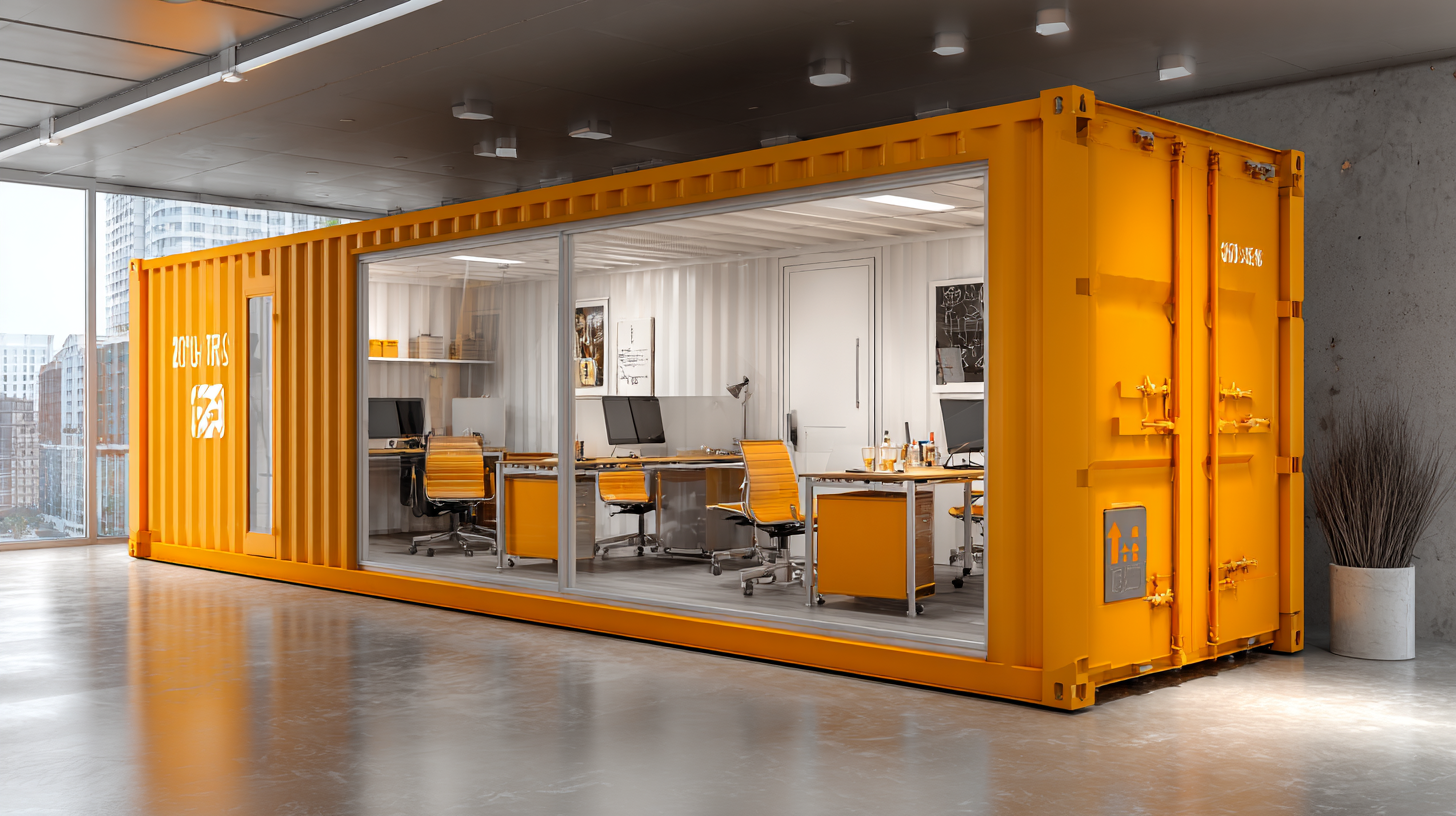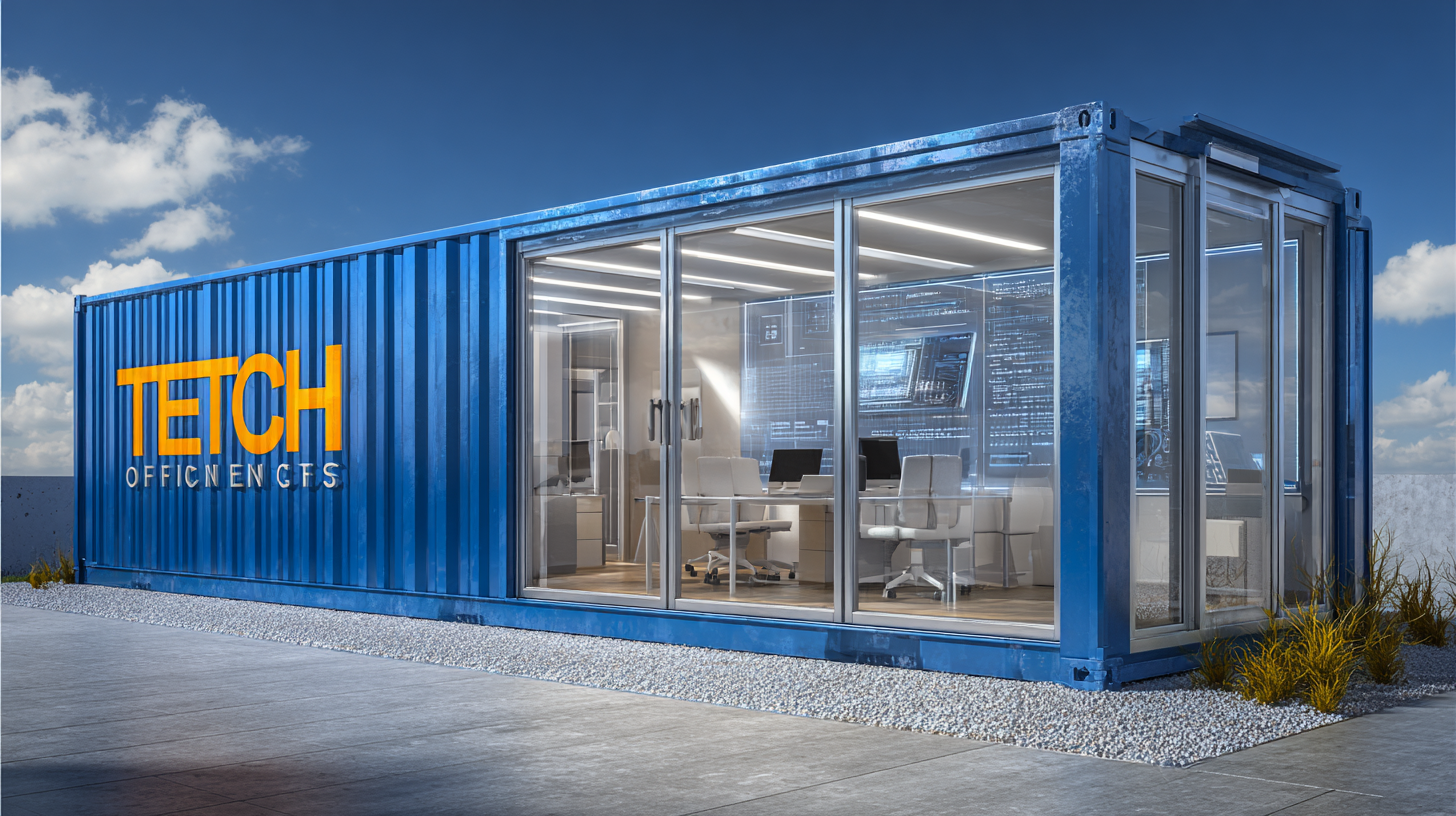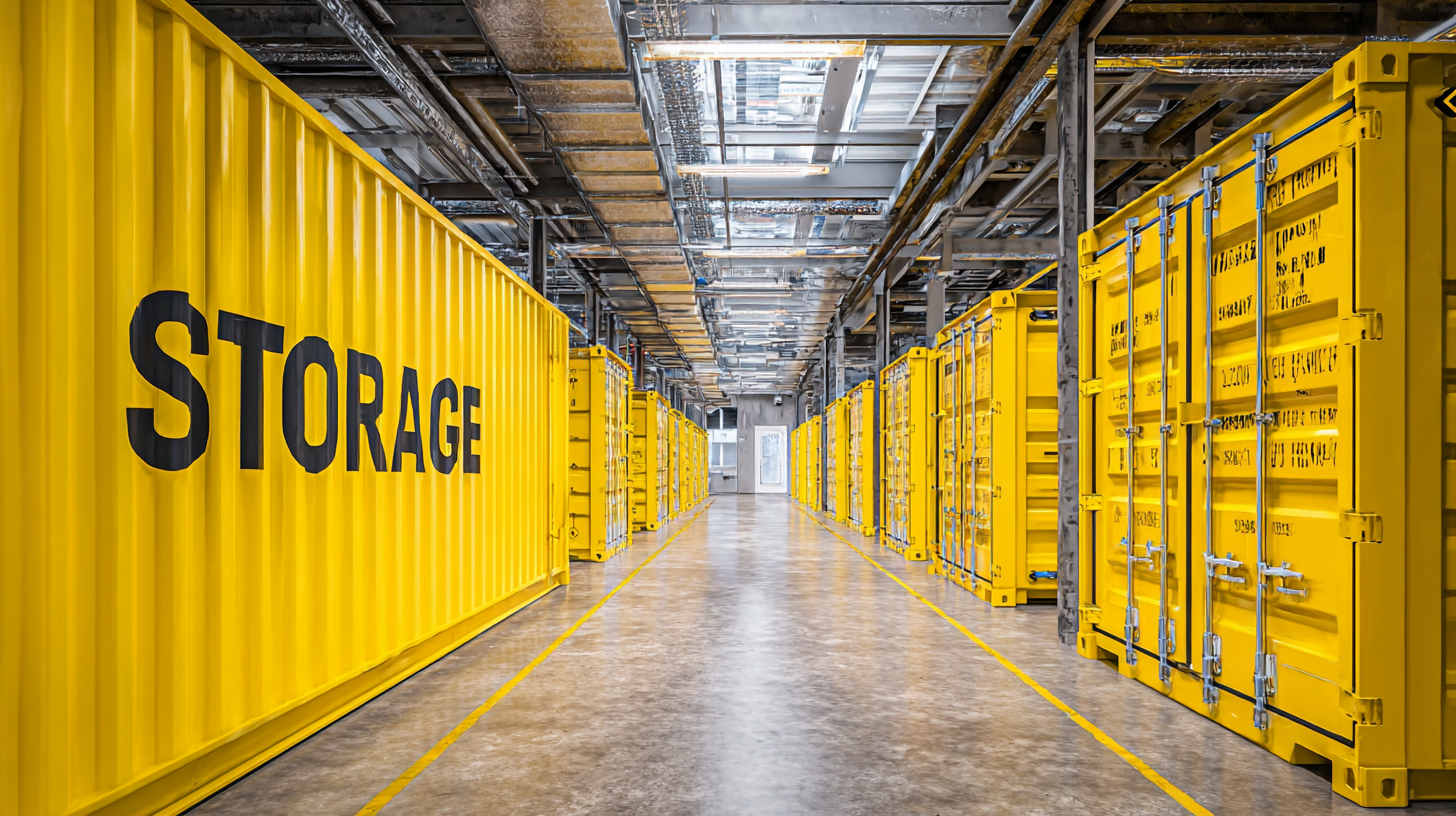As we move towards Industry 2025, the integration of innovative technology trends is reshaping the landscape of workspaces, particularly for businesses seeking flexible solutions. One such solution that has gained significant traction is the Storage Container Office. These innovative offices not only offer a practical response to real estate challenges but also embody sustainability, mobility, and efficiency. In this blog, we will explore the best practices and standards for creating effective Storage Container Office solutions that align with modern industry needs. By embracing the latest tech trends and design principles, companies can transform standard shipping containers into functional and inspiring work environments that are poised to support future growth while adhering to industry production standards.

Join us as we delve into the ultimate guide to optimizing these unique spaces for enhanced productivity and success.
 The concept of storage container offices has gained significant traction within the Industry 2025 ecosystem. As businesses seek innovative solutions to adapt to the evolving market demands, these modular offices offer flexibility, sustainability, and cost-effectiveness. Industries are now recognizing that these repurposed containers can transform any workspace into a dynamic environment that encourages collaboration and creativity.
The concept of storage container offices has gained significant traction within the Industry 2025 ecosystem. As businesses seek innovative solutions to adapt to the evolving market demands, these modular offices offer flexibility, sustainability, and cost-effectiveness. Industries are now recognizing that these repurposed containers can transform any workspace into a dynamic environment that encourages collaboration and creativity.
Tip 1: When considering a storage container office, sustainability should be a priority. Opt for containers that are refurbished and equipped with eco-friendly materials to minimize your carbon footprint. This not only supports environmental goals but can also improve your company’s brand image in a society increasingly focused on sustainability.
Another key advantage of storage container offices is their mobility and ease of setup. Businesses can relocate and modify their workspace without significant hassle.
Tip 2: Plan for versatility in your design. Selecting containers that can be easily customized will allow you to create a space that adapts to your growing needs. Incorporate elements like modular furniture and foldable partitions to maximize functionality while maintaining a creative atmosphere.
By embracing these trends, companies are not just opting for a practical solution but are also positioning themselves at the forefront of Industry 2025, ready to tackle future challenges head-on.
The trend towards container office solutions is rapidly gaining traction in the modern workspace landscape, driven by significant technological innovations and key features that enhance functionality and efficiency. According to a recent report by Mordor Intelligence, the global modular office market is expected to grow at a CAGR of over 6% between 2021 and 2026, fueled by the increasing demand for adaptable workspaces. Container offices not only offer flexibility but also provide sustainable options, leveraging eco-friendly materials and energy-efficient technologies.
Technological advancements have further propelled the popularity of container offices. Smart technology integration, such as IoT devices for temperature control and security systems, has optimized the container office experience. For instance, a study by Research and Markets indicates that incorporating IoT in modular construction can reduce operational costs by up to 30%. Additionally, innovations in insulation and soundproofing materials are addressing common concerns about comfort and acoustics, making container offices a viable option for various industries seeking modern and efficient workspaces.
| Key Features | Technological Innovations | Sustainability Practices | Space Optimization Techniques |
|---|---|---|---|
| Modular Design | Smart Sensors for Monitoring | Recyclable Materials Usage | Vertical Storage Solutions |
| Weather Resistance | IoT Integration | Solar Energy Compatibility | Multi-functional Spaces |
| Customizable Interiors | AI-driven Space Planning | Water Efficiency Technologies | Flexible Workspace Configurations |
| Energy-efficient Systems | Augmented Reality Features | Green Building Certifications | Maximized Natural Light |
| Sound Insulation | Remote Monitoring Systems | Low VOC Finishes | Compact Furniture Solutions |
The rise of container offices is a game-changer in the commercial real estate landscape, offering a cost-effective alternative to traditional office spaces. According to a report by the Global Industry Analysts, the container office market is projected to reach $65 billion by 2025, fueled by the increasing demand for flexible and sustainable work environments. This rapid growth underscores the cost advantages of container offices, which can be up to 30% cheaper to deploy than conventional construction methods, reducing overall expenses significantly for businesses looking to expand or relocate.
Furthermore, the operational efficiency that container offices provide cannot be overlooked. A study by MarketsandMarkets highlights that companies can save an average of 15% in operational costs by utilizing modular and portable office solutions. These savings stem from reduced construction time and lower maintenance costs, making container offices a pragmatic choice for businesses focused on maximizing their budgets. The flexibility offered by these structures also aligns with the evolving nature of workspaces, where adaptability and quick solutions are increasingly prioritized in the face of changing economic conditions.
The rise of modular container office solutions has revolutionized the way we approach workspace design, with sustainability at the forefront of this trend. These innovative structures not only provide flexible and cost-effective office spaces but also emphasize environmental responsibility. Utilizing repurposed shipping containers reduces the need for new materials, minimizing waste and energy consumption associated with traditional construction methods. This circular approach aligns perfectly with the growing global emphasis on green architecture and sustainable living practices.

Furthermore, the adaptability of container offices means they can be easily relocated or modified, reducing the carbon footprint as businesses can avoid lengthy construction projects and potential disruptions. Many designs incorporate eco-friendly features such as solar panels, rainwater harvesting systems, and energy-efficient insulation. By investing in modular container offices, organizations contribute to a sustainable future while reaping the benefits of modern, scalable workspaces that can evolve with their needs. This blend of functionality and eco-conscious design makes modular container solutions an attractive option for forward-thinking companies looking to make a positive impact on the environment while optimizing their operations.
As we transition into the era of Industry 4.0, the importance of future-proofing workspaces cannot be overstated. Recent studies indicate that 70% of companies recognize the need to adapt their office environments to harness the full potential of digital technologies. Container offices, with their inherent flexibility and cost-efficiency, are becoming a pivotal solution to meet these evolving demands. By utilizing smart technology integrations, these modular structures can be optimized for enhanced connectivity, enabling seamless collaboration irrespective of location.
Moreover, research from the Global Workspace Survey reveals that a staggering 72% of employees prefer environments that foster innovation and adaptability—characteristics that container offices can uniquely provide. These dynamic spaces can be quickly repurposed for diverse functions, from collaboration zones to quiet workstations, supporting a culture that thrives on agility and responsiveness. Embracing these innovations not only cultivates a more engaged workforce but also positions businesses to navigate future challenges with resilience and creativity, aligning perfectly with the core principles of Industry 4.0.
This chart illustrates the projected adoption rates of various technologies in storage container office solutions as we move towards Industry 2025. Companies are increasingly adopting innovative tech trends to future-proof their workspaces.